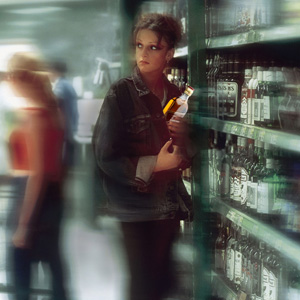The Science of Substance Abuse
Dirk Hanson
Articles and health studies about drugs, addiction and alcoholism, including the most recent scientific and medical findings.
Thursday, September 1, 2011
Is Shoplifting the Opiate of the Masses?
Another look at "behavioral addictions" and the DSM-V.
The DSM-V, when it debuts it 2012, is set to replace the category of “Substance-Related Disorders” with a new category entitled "Addiction and Related Disorders." Gambling is the only behavioral addiction currently recommended for inclusion, but some experts have set their sights on shoplifting—an activity that is even more difficult to picture as a legitimate addiction than gambling. Or is it?
Long before gambling was widely looked upon as an addictive disorder, compulsive shoplifting already had a name: kleptomania. The National Association for Shoplifting Prevention claims that about 9-10% of the population show a “lifetime prevalence” for shoplifting. This is remarkably similar to the percentages commonly bandied about for alcoholics, drug addicts, unipolar depressives, compulsive gamblers, and compulsive overeaters.
A recent University of Florida survey pegged shoplifting losses, or “shrink,” in 2009 at more $11 billion annually. Plato, in The Republic, wanted to know whether thieves are made or born. It’s a good question. Curiously, the stealing doesn’t seem to be about money: The most recent study measuring income and shoplifting shows that Americans with incomes over $70,000 shoplift 30% more more than their fellow citizens earning less than $20,000 a year. And the actual items stolen by compulsive shoplifters often seem nonsensical, or even surreal. As director John Waters said of Pink Flamingos’ star and compulsive shoplifter Divine: “I saw him walk out of a store once with a chain saw and a TV.”
There is a definite “rush” to the act of stealing, writes Rachel Shteir in The Steal, her informative book about shoplifting. One shoplifter said it was equal to drugs but only lasted a few minutes—“And you’re back to yourself again. In your mind, you think, It was all for a stupid blouse, or stupid soap. For this, I risked everything.” Another source quoted in the book says, “I shoplifted every day, like someone with a drug addiction.” Seconds before another women is arrested, she quizzes herself: “All she needs in the world is one crummy formal dress so why is there a blue silk jacket, one that she doesn’t particularly like, in her camera bag?” And a shoplifting Lee Grant says in the movie Detective Story: “I didn’t need it. I didn’t even like it.” The objects seem to lose their intrinsic value once they have been stolen, and the shoplifter must get high again with another theft.
If, as some neurobiological researchers insist, addictive disorders are not independent disorders, but outward manifestations of an underlying disease pathology called addiction syndrome, then the definition might be stretched to include gambling, shoplifting, and certain other “activity-based expressions of addiction.” Sometimes the alcoholic, the drug addict, the depressive, the compulsive gambler, and the obsessive overeater are all one and the same person. And drug addicts show a remarkably ability to substitute one drug for another. Perhaps a recovering cocaine addict might hope to assuage that sense of craving, of inchoate need, through excessive gambling. Or a shoplifter might use alcohol as a means of dampening the impulse to steal compulsively. While we don’t use the term kleptomania anymore, “shoplifting crops up as a symptom of many types of mental illnesses—bipolar disorders and anxiety disorders as well as substance abuse, eating disorders, and depression,” writes Shteir. Compulsive shoplifting, Shteir concludes, is “as difficult to stamp out as oil spills or alcoholism.”
For some, shoplifting brings a rush “similar to a cocaine or heroin high,” according to psychiatist Jon Grant at the University of Minnesota School of Medicine. To find out just how similar, psychiatrists there tried treating shoplifters with naltrexone, a drug that blocks opioid receptors and is used to treat alcoholism and heroin addiction. In 2009, in an article for the April issue of Biological Psychiatry, Grant and colleagues at the University of Minnesota School of Medicine recorded the results of their work with 25 kleptomaniacs, most of them women. All of the participants had been arrested for shoplifting at least once, and spent at least one hour per week stealing. The 8-week study is believed to be the first placebo-controlled trial of a drug for the treatment of shoplifting. In the April 10 issue of Science, Grant said that “Two-thirds of those on naltrexone had complete remission of their symptoms.”
Photo Credit: http://www.zawaj.com

Good posts. I enjoyed reading them.
ReplyDelete